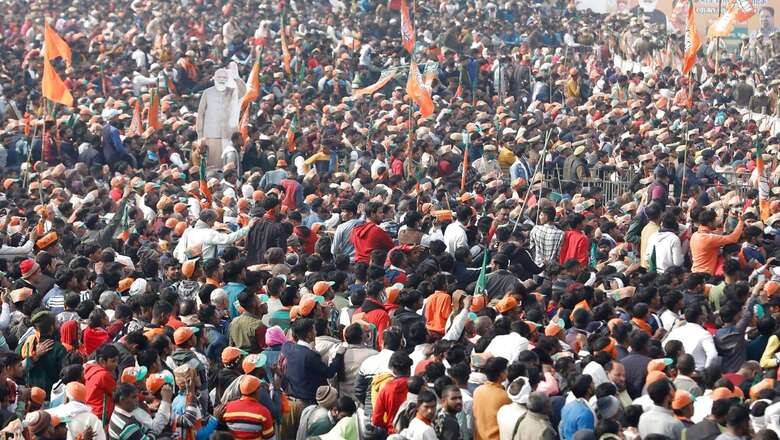
views
Smaller political parties occupy important space in the discourse around the 2022 Uttar Pradesh assembly elections as they are being perceived as ones with strong vote base among their own respective castes. Suheldev Bhartiya Samaj Party led by Om Prakash Rajbhar who is considered crucial in swinging election results in a big way in eastern Uttar Pradesh has a clout among the Rajbhar community. Apna Dal led by Anupriya Patel and Apna Dal (Kamaravadi) by Krishna Patel are parties emerged from the vote base of Kurmi castes. Similarly, Mahan Dal is being viewed as a popular front among Maurya, Koiri and Kushwaha castes in certain parts of Uttar Pradesh.
Sanjay Nishad-led Rastriya Nishad Party is exclusive to empower Nishad castes in UP. Jan Adhikar Party(JAP) has a base among the Kushwaha caste in certain regions of Uttar Pradesh, and is led by Babu Singh Kushwaha who was an important leader of Bahujan Samaj Party (BSP) a few years ago. Most of these are known as caste-based political parties due to two reasons – first, they pose an interest of their community as primary and central to their political agenda and other issues come later. Second, their electoral and other kinds of support such as donations, cadres come from the caste of the leaders who lead the political outfit.
These parties are an indication of the growing political awareness of castes such Rajbhar, Nishad, Maurya, Kushwaha and OBCs. The caste-based parties also show that the leaders who emerged from these castes can lead the people in their struggle for representation and drawing benefits in a democracy. Also, this phenomenon also indicates that the ambitions of the leaders from such castes are not being fulfilled in the mainstream political parties such as the Bharatiya Janata Party, Congress, Samajwadi Party and BSP. Through this kind of politics, these castes acquire the power to negotiate for their proper representation in the democracy. The people of these castes addressed themselves as ‘samaj’, for example, the Maurya Samaj, Kushwaha Samaj, Rajbhar Samaj and so on. In a way, the Indian society consists of various castes.
As we know in UP, there are around 79 OBC and Most Backward Classes (MBC). This list is being extended and a few more castes may be included soon. A question emerged why only a few OBC castes have their own political parties of powerful leaders, not others? The first reason is that most of these castes who succeeded in evolving their own politics by churning out their own political parties and influential leaders are numerically important among the OBC cluster in UP. Yadavs, who are a politically influential community in the state, comprise at least 10% of the UP population. Lodhi, Kurmi, Kushwaha (Maurya, Saini, Shakya, Koeri) and Nishads have a are around 5% of the total population of the state. Most of them have already acquired the strength to do politics by producing at least an educated section among communities, become economically mobile and spread their history of pride of their castes. For example, castes such as Rajbhar assert their histories by narrating Suheldev as their caste icon. The Kurmi Samaj connect themselves with Sardar Vallabh Bhai Patel and Maurya with Samrat Ashok Maurya. So, histories also provide them with social confidence to assert for their share in the power structure.
ALSO READ: UP Next: Congress’ Big Worry — If Priyanka Gandhi Mobilising Discontent Will Benefit Samajwadi Party
Several OBC castes in UP such as Arakh, Giri, Chikawa, Chhipi, Tamoli, Teli Darzi, Bari, Manihar, Lohar, Sonar Patua and Madari are still in search of their own political identities. Most of them neither have their own caste-based political parties nor have yet produced influential political leaders from their own communities, and are also numerically smaller. The educational and economic mobility of these castes is also slow but some of them have their own caste association, which may facilitate the process of production of their politics. Hopefully, they may take some more time to show their political assertion in the politics of democracy and we may see some smaller parties in the politics of Uttar Pradesh in the near future.
Badri Narayan is Director at the GB Pant Social Science Institute, Prayagraj. He is a political analyst and works on social change. The views expressed in this article are those of the author and do not represent the stand of this publication.
Read all the Latest Opinions here




















Comments
0 comment